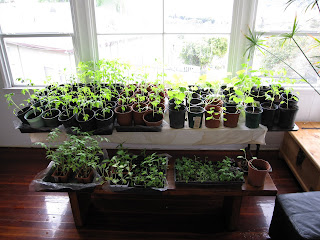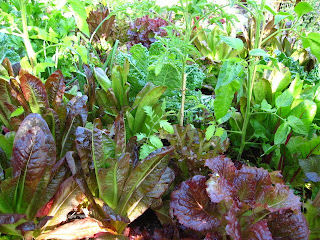 Hola and Great Morning to Everyone!! Today's blog is about Organic Pest Control and the many ways we could apply them to our gardens :) 100% Natural, Biodegradable, Earth Friendly, and Non Toxic.
Hola and Great Morning to Everyone!! Today's blog is about Organic Pest Control and the many ways we could apply them to our gardens :) 100% Natural, Biodegradable, Earth Friendly, and Non Toxic.- Placing cardboard around young tomatoes, cabbage, or other transplants to exclude cutworms
- Handpicking tomato hornworm or cabbage worms from plants
- Rotating your crops year to year
- Interplanting crops
- Introducing beneficial insects
- Home made Herbal Sprays

Many organic farmers are familiar with using sprays made from aromatic herbs to repel pests from the garden plants. Several recent studies confirm the repellent effect of such sprays. The essential oil of Sage and Thyme and the alcohol extracts such as Hyssop, Rosemary, Sage, Thyme, and White Clover can be used in this manner. They have been shown to reduce the number of eggs laid and the amount of feeding damage to cabbage by caterpillars of Diamond back moths and large white butterflies. Sprays made from Tansy have demonstrated a repellent effect on imported cabbageworm on cabbage, reducing the number of eggs laid on the plants. Teas made from Wormwood or Nasturtiums are reputed to repel aphids from fruit trees, and sprays made from ground or blended Catnip, Chives, Feverfew, Marigolds, or Rue have also been used by gardeners against pests that feed on leaves.
- Protection Offered: Try herbal sprays against any leaf-eating pests and make note of what works for future reference.
- How to Make: In General, herbal sprays are made by mashing or blending 1 to 2 cups of fresh leaves with 2 to 4 cups of water and leaving them to soak overnight. Oor you can make a herbal tea by pouring the same amount of boiling water over 2 to 4 cups fresh or 1 to 2 cups dry leaves and leaving them to steep until cool. Strain the water through a cheesecloth before spraying and dilute further with 2 to 4 cups water. Add a very small amount of nondetergent liquid soap (1/4 teaspoon in 1 to 2 quarts of water) to help spray stick to leaves and spread better. You can also buy commercial essential herbal oils and dilute with water to make a spray. Experiment with proportions, starting with a few drops of oil per cup of water.
- How to Use: Spray plants thoroughly, especially undersides of leaves, and repeat at weekly intervals if neccessary.






























